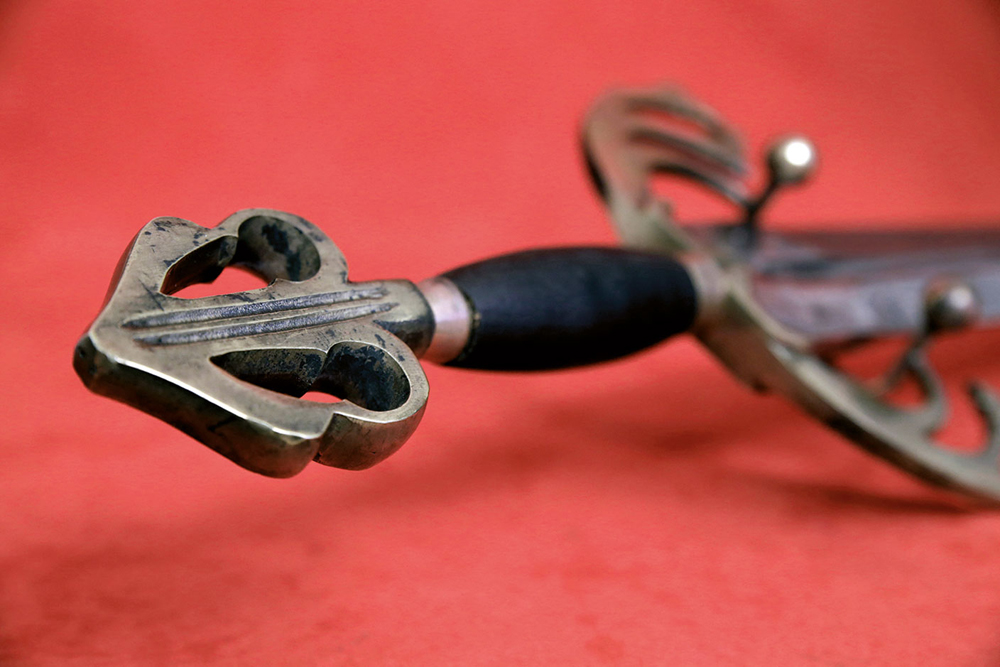
Valentzia, 1094. Rodrigo Díaz de Vivar Cid-ek hiria hartu zuen eta zeregin horretan Tizona izeneko ezpata kendu zion Marokoko Bucar erregeari. Horixe dio behintzat Mío Cid-en eresiak. Cidek haren suhiei, Carrióngo infanteei oparitu zien arma, gero berreskuratzeko eta, azkenik, Pedro Bermúdez ilobari eman omen zion. Hor galdu zen ezpataren arrastoa.

Mende batzuk geroago ustezko Tizona Errege-Erregina Katolikoen esku zegoen. Pierres Peralta Ezpeleta kondestable agaramontarrak (1421-1492) errege-erreginen ezkontzaren aldeko negoziazioetan lan handia egin zuen eta, horregatik, Fernando Katolikoak ezpata hura, Io soi Tisona hitzak grabatuta dauzkana, eman zion opari. Ezpataren jabe berria, Leringo I. kondea, Martzillako baroia eta Faltzesko lehen markesa izango zenaren aitona zen eta, hala, ezpata mitikoa Martzillako gazteluan gorde zuten. Hantxe egon zen XX. mendera arte, Espainiako Gerra Zibila arte, zehazki.
Kolpistentzat Espainiaren iragan loriatsuaren sinboloa zen Tizona eta, horregatik, Nafarroatik atera eta Madrilgo Ejertzitoaren Museora eraman zuten frankistek. 1975ean Franco hil ondoren, ezpata Faltzesko markesari –Peraltaren oinordekoari– itzuli zioten eta hura Espainiako Kultura Ministerioari saltzen ahalegindu zen. Baina ministerioak pieza erosteari uko egin zion, Rodrigo Díaz de Vivarren benetako ezpata zela baieztatuko zuen frogarik ez zegoela argudiatuz.
78,5 zentimetro luze eta 4,5 zentimetro zabal den ezpata xehe aztertu dute adituek, eta orria kalitate onekoa eta Ciden garaikoa dela diote (egun duen ezpata-burua berriagoa da, XV. mendean ipini zioten). Beraz, mendetan Martzillako gazteluan egondako ezpata benetako Tizona izan daitekeela diote, baina horren behin betiko frogarik ez da sekula aurkitu. Gainera, beste Tizona batzuk ere azaldu edo aipatu izan dira hainbat dokumentutan.
Eta, hala ere, Gaztela-Leóngo Juntak 2003. urtean 1,6 milioi euroren truke erosi zion ezpata markesari.